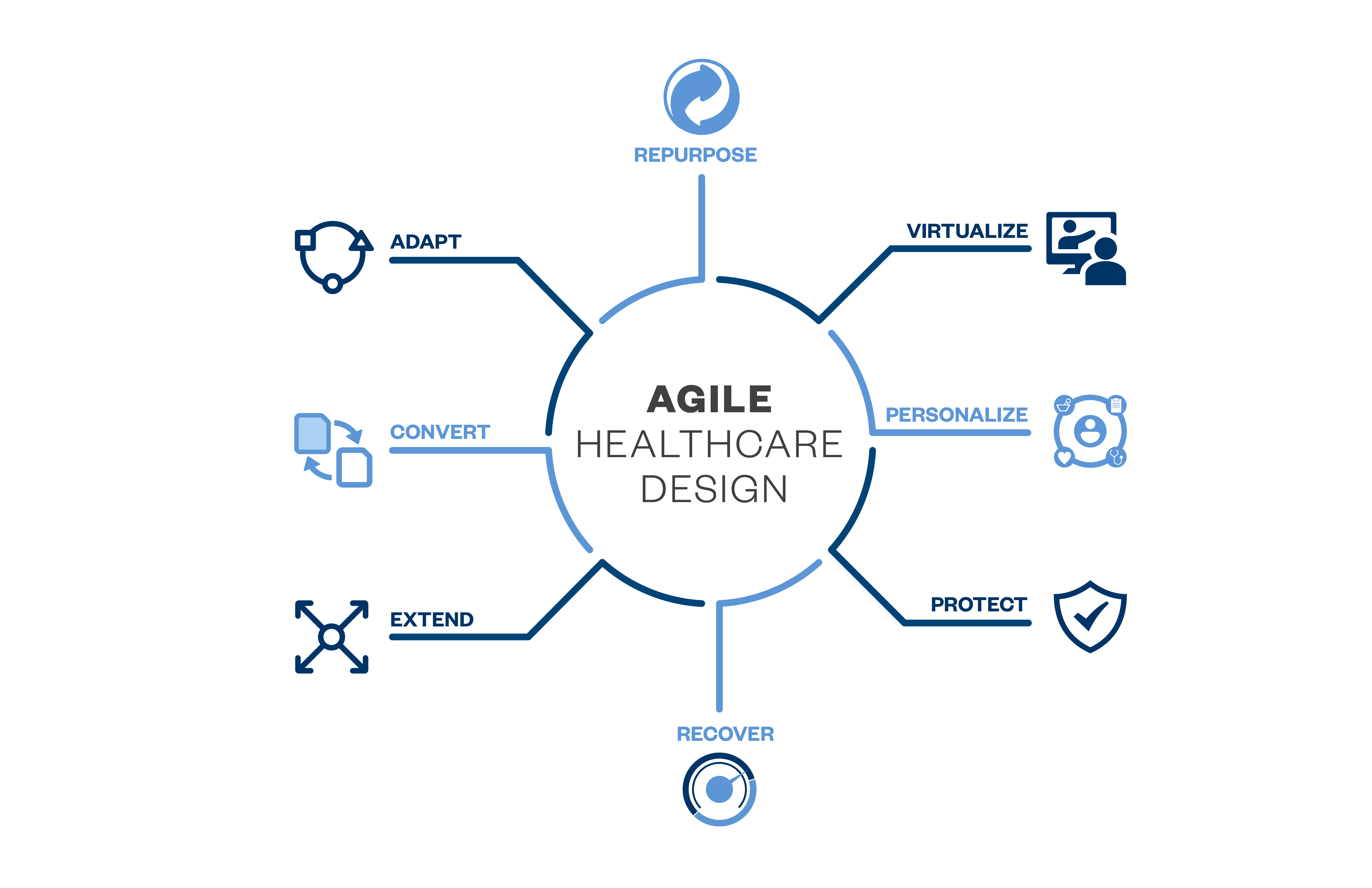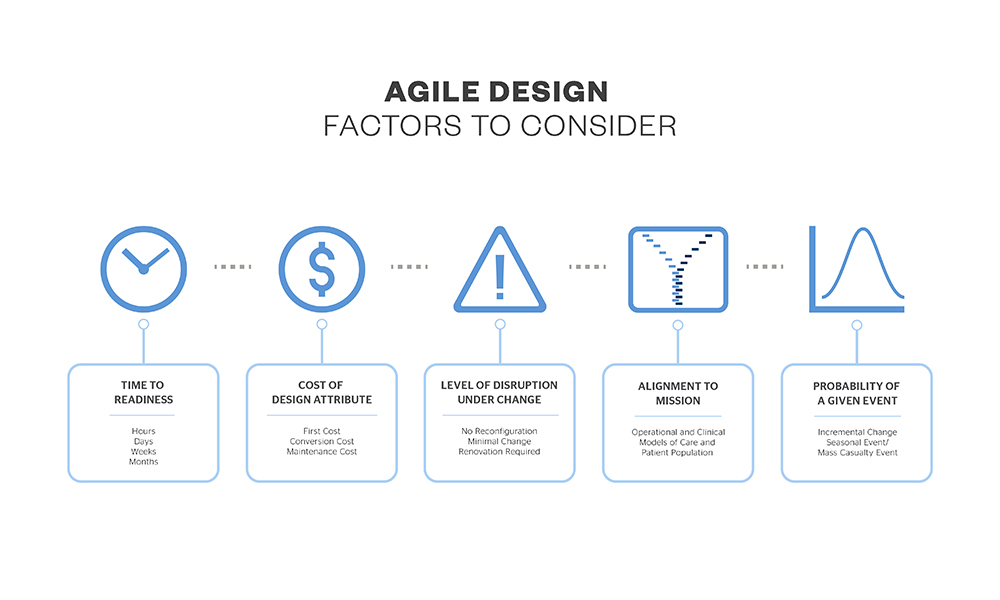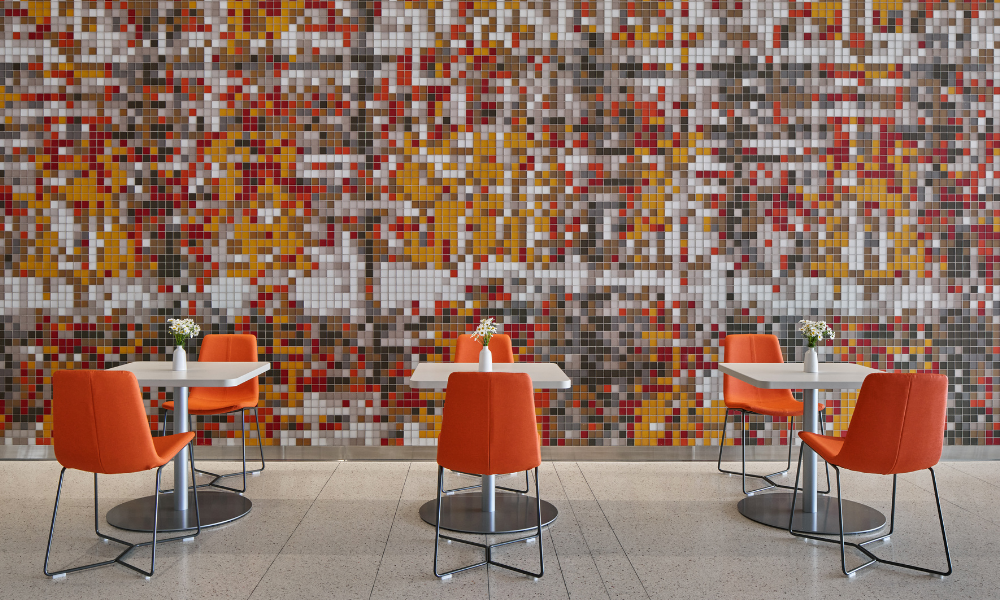
Agile Healthcare Design: Improving Readiness and Resiliency
As designers and researchers, we are learning from the successes and failures of the past few months and are exploring designs that are better able to pivot to accommodate large-scale events like pandemics in the future. We are asking ourselves how we can advance healthcare design to be more agile, responsive, resilient, and less disruptive and what that design would ultimately look like?
In the midst of the daily disruptions and tragedies of the past few months, the improvisation and creative responses spurred by the COVID-19 crisis are giving us an opportunity to reimagine and rethink healthcare, and by extension, healthcare facility design. We want to look for ways to better leverage existing infrastructure faster with less disruption. And, we need to be exploring designs that are better able to pivot as telehealth, physical distancing, mobile care, the no-wait visit quickly take hold. Recovery efforts are moving forward and the focus on readiness for future threats remains a high priority, and there is much to be learned from the successes and failures of the past few months. What will it take to be change-ready in the face of new challenges? These efforts will require agility, and more responsive and resilient facilities.
Humbled and inspired by what we have seen over the past months, we are exploring the concept of agile healthcare design that extends beyond the flexibility to adapt, convert, or expand facilities. These agile strategies include the ability to flex to virtual care as needed, to extend care to adjacent or remote locations, to protect patients and staff from multiple threats, to personalize the environment to meet the changing needs of patient or staff, to be repurposed for alternative use, and, importantly, to recover without significant damage.

Why Agility?
The concept of agile has been around for many years in software, manufacturing, and other industries. Many disciplines describe agility as encompassing durability, resilience, resourcefulness, speed to response, flexibility, being attuned to the environment, and a state of preparedness. In software design, agile refers to a highly iterative and rapid design process conducted with high levels of user involvement. The 2001 Agile Manifesto laid out principles for an agile process, and suggested that “facilitating change is more effective than attempting to prevent it.” Agility has also been defined as a state of “continual readiness” that creates change, embraces change, and learns from change. In manufacturing, agility focuses on creating early-warning systems, speed to response, and optimize profitability.
Agility is closely aligned with speed to change in the context of volatile environments, incorporating strategies such as modular design, virtual services, smaller-scale operations, and plug and play operability. In healthcare, agile has entered the conversation in the context of organizational structures that foster improvement efforts and service quality, to name just two examples.
Agile Healthcare Design
Healthcare design researchers and practitioners are keenly focused on the flexibility of building design features. Design literature defines flexibility in terms of expandability, convertibility, and adaptability and sometimes emphasizes the value and perception of stakeholders in developing flexible designs. Flexibility is also described as a “switch” or option to turn on or off as required. A recent framework builds on previous work and defines flexibility in terms of versatility, adaptability, modifiability, and scalability at the individual user (a clinician, for example) or the institutional level. Strategies such as the universal or acuity-adaptable patient room, the creation of horizontal and vertical expansion zones, standardized exam rooms, demountable walls, and modular designs are among the exemplars of these attributes. Applying the concept of agility to healthcare design can advance the concept of flexibility to reflect responsiveness and readiness. A 2007 article on change-ready design, suggested more agile designs, that is, designs that would be relevant and not “dependent on only one scenario of functionality.” The VHA has emphasized the need for agility in a dynamic environment – referring to strategies that encompass facility and non-facility solutions and innovation. A study focused on improving infrastructure modeling following the devastation of Hurricane Katrina did not use the term agility, but considered the “plasticity of systems,” the issue of elastic capacity, and the ability to transition with resiliency as essential contributors to the response.
Evidence-based Agility Strategies
One major role of designers and design researchers is to build a better evidence base for the facility and non-facility strategies that promote agility for healthcare organizations. This might be related to the patient and family experience and clinical need or incremental growth, seasonal disruption, or the need to switch to conventional, contingency, or crisis mode. A novel measure of agility in design could be a “time to readiness requirement” metric (which might be minutes, hours, days, or weeks depending on the event). If, for example, we propose an agile design strategy such as an ED bed with dual gasses to accommodate two patients if needed, how do we know that is the best solution? Is it prudent to build all universal rooms or more AIIR rooms? Or, is there a better option or, more likely, bundle of attribute options? Modeling and machine learning tools provide one powerful way to understand which design-related attributes enable agility and under what circumstances. Such an analysis incorporates the first cost of construction, the cost and disruption of renovation, the cost of temporary surge solutions, and the functional need which the strategy is responding to (pandemic or seasonal surge, for example). Factors such as alignment with mission, probability of an event occurring, and shape of new or changing demand could support the cost and risk.

In the coming weeks and months, we will be exploring and sharing campus, building, layout, space, and experiential design attributes that promote agility. We will also be exploring methodologies to better understand which design-related attributes enable agility under what circumstances and at what cost. We would very much like to hear from you.





